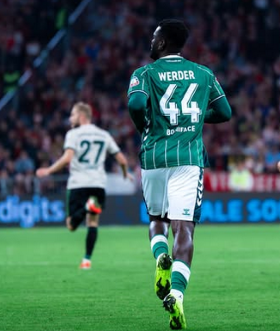These days, art and technology are teaming up to spark all sorts of cool ideas and creations. As tech gets fancier, artists are using it to come up with totally new ways to make art that blows people's minds. This article dives into the exciting world where art and tech meet, showing how they're changing the way we think about creativity and impacting our world.
The Evolution of Art and Technology
Throughout history, art and technology have been intertwined in various ways, each influencing the other's development. From the invention of the camera obscura, which revolutionized the way artists approached perspective in painting, to the rise of digital art in the 20th century, technological advancements have continuously transformed artistic practices. Today, artists play with 100 free spins no deposit, utilizing digital tools and platforms to explore new mediums and engage with audiences in innovative ways.
In the past few years, the rise of digital technology has completely changed the way artists create and share their work. Now, artists can use digital tools and software to explore different ideas and techniques without being limited by traditional materials. Whether it's digital painting, 3D modeling, or even diving into virtual reality (VR) and augmented reality (AR), there's a whole world of possibilities for artists to express themselves like never before.
The Impact of Technology on Artistic Expression
The fusion of art and technology has opened up exciting new avenues for creative expression and pushed the boundaries of what we consider art. Digital art forms like generative art and interactive installations are breaking down the barriers between the physical and virtual worlds, inviting us into immersive experiences that stimulate all our senses.
One of the most groundbreaking developments lately has been the rise of VR and AR technologies. VR immerses us in completely digital environments, while AR overlays digital content onto our real world, blending the two in mesmerizing ways. Artists are leveraging these technologies to craft interactive pieces that respond to our movements and actions, turning passive observers into active participants.
Another fascinating frontier is the intersection of technology and data visualization. Artists are employing algorithms and data-driven methods to create visually striking pieces that delve into complex topics like climate change, social injustice, and consciousness. Through the lens of big data and machine learning, they're uncovering fresh perspectives on urgent societal issues, prompting us to rethink our perspectives and assumptions.
The Intersection of Art and Science
Art and technology are teaming up to do more than just influence art – they're sparking collaborations between artists and scientists that are pushing boundaries and coming up with amazing new ideas. Take, for instance, the way artists and scientists are teaming up in places like art-science residencies and research projects. They're joining forces to explore what they have in common and tackle big problems together.
One cool example is bio artists. They're using biotechnology and genetic engineering to make living art that blurs the line between what's natural and what's made by humans. They're messing with living things like bacteria and fungi to create art that makes us think about the ethics of messing with nature.
Then there are artists who mix art with robotics. They're asking deep questions about things like freedom, control, and what it means to be aware. They're making robots that act like humans, and it's making us rethink where we draw the line between people and machines.
The Social and Ethical Implications
When art and technology team up, it's like unlocking a whole new world of creativity and innovation. But with this exciting fusion comes some serious stuff to think about, especially when it comes to how it affects society and what it means for ethics.
As we keep seeing more and more tech in our everyday lives, artists have this important job of really looking into how it all affects us and making sure we're all aware of any potential problems.
Take AI-generated art, for instance. It's cool and all, but it's also making us wonder: who gets to say they made it? And what happens when computers start making stuff that's just as good as what us humans can do? It starts making us think about the value of human work and how much control we want to give to technology over what we create.
And then there's all this surveillance stuff going on. Cameras everywhere, algorithms watching our every move—it's kind of creepy, right? It makes us worry about our privacy and how much freedom we really have. Artists are stepping in to make us think hard about these issues, using their art to spark conversations about how tech is shaping our world, both socially and politically.
Navigating the Future: Challenges and Opportunities
Looking ahead, the blend of art and technology brings a mix of hurdles and chances. On one side, the progress in technology opens up new avenues for creativity and teamwork. Yet, it also brings up crucial concerns regarding fairness, accessibility, and how technology influences society.
Consider the digital gap, which remains a significant obstacle for numerous artists, especially those from underrepresented backgrounds. They often lack access to the necessary tools and support to fully engage in the digital art scene. Additionally, worries about privacy and biased algorithms raise ethical issues concerning technology's role in shaping culture and representation.
Nevertheless, amid these obstacles, the fusion of art and technology presents opportunities for positive transformations and fresh ideas. By embracing diversity, promoting collaboration across disciplines, and addressing ethical and social dilemmas, artists can utilize technology's potential to craft meaningful and influential creations. These works have the power to inspire, challenge, and push us to envision a brighter tomorrow.
Conclusion
The place where art and technology meet is a constantly changing and exciting space. It's where creativity, new ideas, and asking important questions all come together. Artists are using technology in amazing ways, whether it's creating digital art, setting up interactive exhibits, or even working with biology and robots. They're using these tools to break boundaries and make us think differently about the world we live in. In today's digital world, it's really important for us to think about these things and recognize how art and technology can change the world for the better, making it fairer, more equal, and full of creativity.







Comments 0
Leave a Comment
No comments yet. Be the first to comment!